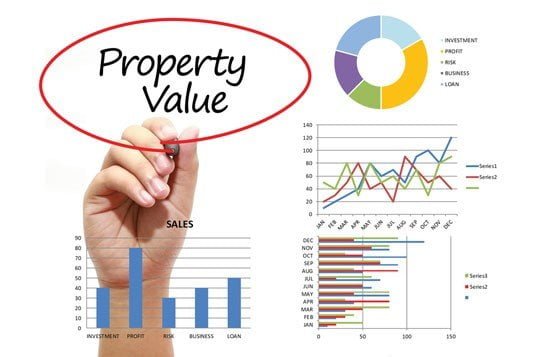If you have a commercial property and want to put it up for sale, determining its value is crucial. Given that most commercial real estate (CRE) projects involve significant investments, careful consideration is necessary to make informed decisions. The first and most important step is valuing your commercial property accurately. Valuation for commercial real estate differs from residential properties due to added complexities and heightened values, making the process more challenging.
Approaches to Valuing Commercial Real Estate
There is a correct way to value your commercial property to get the best deal possible. The goal is to find the most advantageous approach for you. Understanding the different methods of valuing commercial properties is essential, and this article will help you gain an edge.

The Sales Comparison Approach
The Sales Comparison Approach, also known as the “market approach,” involves analyzing recent sales data, or “comps.” This method is commonly used in residential property valuation but can also apply to commercial real estate. However, finding comparable data for commercial properties is often more challenging. You may need to look beyond your market area for like-kind comparables, including demographics, access to infrastructure, leasing trends, and other relevant information.
Fortunately, property intelligence or AI-powered data platforms are available specifically for the commercial real estate industry. These tools allow appraisers and investors to quickly access opportunities in any market and uncover strategic insights, ultimately helping you value your commercial property effectively.
The Cost Approach
The Cost Approach is based on the assumption that informed buyers are unlikely to spend more on a property than it would cost to acquire land and build the same property from scratch. This method calculates the cost to rebuild the property, considering the current land value, construction materials, labor, and other factors. The property value is derived using a simple formula: Property Value = Land Value + Cost to Build New – Depreciation.
While this approach is not commonly used, it can be useful when your commercial property is in a less active market where data for other methods is difficult to collect.
The Income Approach
The Income Approach is one of the most popular methods for valuing commercial property. It focuses on the income the property is expected to generate in the future. To use this approach, you need to understand Net Operating Income (NOI) and Capitalization Rate (Cap Rate).
NOI is the net income generated by a property minus operating expenses, excluding capital expenditures, debt service, and taxes. The Cap Rate represents the ratio of NOI to the property’s value and indicates the anticipated return on investment (ROI) for the property owner.
To find the value of your commercial property using this method, use the formula: Property Value = NOI / Cap Rate. While this approach is popular, it is only accurate if you carefully consider all inputs. Miscalculating rents or underestimating vacancy rates can lead to inaccurate results.
The Gross Rent Multiplier Approach
If you prefer a simpler method, However Gross Rent Multiplier (GRM) approach might be suitable. This approach provides a quick estimate of your property’s value. The formula used is: Property Value = Annual Gross Rents x Gross Rent Multiplier.
Unlike the Income Approach, which uses net income, the GRM method relies on gross income to calculate property value. This approach can be helpful when you need a rough estimate quickly.
Making Your Choice
In summary, valuing your commercial property is driven by the information you gather. The more data you collect, the more accurate your valuation will be. Expert appraisers often use multiple approaches and average the results to determine the most accurate property value. While the process may seem challenging initially, it becomes easier as you gain experience.
Even after outlining all the information above, valuing your commercial property for sale can still seem daunting. That’s why the LeveragedCRE Investment Team at Commercial Properties, Inc. is here to help you achieve your CRE investment goals. Contact us at (480) 330-8897 or send us an email at request@leveragedcre.com.
Need assistance with your 1031 Exchange or DST? We’ve got you covered!
We’ve prepared a comprehensive, free e-book designed to guide you in achieving your long-term business goals or acquiring that dream property you’ve been eyeing.
Meet The LeveragedCRE Investment Team
Phill Tomlinson and Eric Butler are seasoned commercial real estate brokers with over 44 years of combined experience. They lead the LeveragedCRE Investment Team at Commercial Properties, Inc. (CPI) in Scottsdale, Arizona, specializing in investment sales and tenant/landlord representation across the Phoenix and Scottsdale submarkets.
The team leverages their extensive knowledge and expertise to help investors and property owners maximize their returns and navigate complex real estate transactions with confidence.
Stay informed with the latest in Commercial Real Estate strategies designed to enhance your income property investment results by bookmarking www.leveragedcre.com Let us help you stay ahead in the market!


